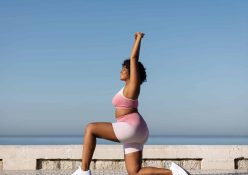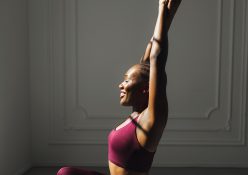Bored of your average run? Experts suggest giving running backwards a try – and it has benefits in store too
Two things that athletes, gym goers and workout newbies will most likely come across during their fitness journeys are exercise trends and an injury or two along the way. Both factors have one thing in common: retro running. It isn’t some old-school form of exercise as you may draw from the name. Instead, it involves you heading backwards – not in time – but while running. If you’ve never heard about this growing trend before, you might think it is somewhat ridiculous. But according to a study by PureGym on trends searched on Google, back-ward running saw a huge 50 percent increase in 2022. And according to various studies, there’s method to retro runners’ madness. We’ve rounded up the pros (and possible cons) to putting your gears in reverse when heading for a run.
Benefits Of Going Backwards
While retro running has seen tremendous growth in popularity, the activity has been around for quite some time. It’s said to have originated in the twentieth century as part of some athletes’ training regimes. Fast-forward an entire century and retro running is an activity adored by many for its benefits. In fact, Dr Robert Stevenson, author of Backwards Running, believes that running in reverse is something that all athletes should incorporate into their fitness regimes.
Lower Impact And Less Injuries
Running forward puts you at risk of knee injuries. Retro running, on the other hand, reduces this risk significantly. Studies published in the Journal of Biomechanics and Proceedings of the Royal Society B: Biological Sciences outline that the feet hit the ground much softer when trotting in reverse, which lowers the impact on the body, especially the knees. This form of running is also often used as a rehabilitation exercise for people with injuries in areas such as the back, ankles, hamstrings and knees.
Perfect Your Posture
Many of us sit hunched over a desk for hours a day. We don’t spend nearly enough effort on maintaining a good posture, which can take its toll on our bodies. This is where reverse running can actually make a difference. Since running backwards requires you to be in a more upright position, you’ll not only walk away with healthier knees but enhanced posture, too.
Calorie Torcher
A local study published in the International Journal of Sports Medicine found that retro running burns 30% more calories than the normal form of running. This means that running in reverse is a great tool for weight loss if that is your goal.
Good For The (Forward Running) Economy
In simpler terms, running backwards can improve your forward running. The results of a study published in the Journal of Strength Conditioning Research showed that going retro leads to higher muscle activity and activation of the heart and lungs than running forward. After only five weeks of retro running, participants in the study increased their forward running economy. Athletes can therefore use this activity as a tool to better their overall performance in forward running.
More Muscle
Another benefit of backward running is that it strengthens the leg muscles, including the shins, calves and quads. It also creates a muscle balance between the anterior and posterior areas in the legs (the quads, calves and hamstrings), which is often hard to achieve.
Practise Makes Perfect
Of course, there are a few drawbacks to retro running, too. For starters, we reckon it’s only the gutsy and highly confident among us who would brave the neighbourhood in reverse. The likelihood of getting a couple of stares is inevitable. And then there’s the risk associated with not being able to see where you’re going, which could lead to injuries. But if you’ve warmed up to the idea of retro running, there are some steps you could take to do so safely. Start off either on a treadmill or in an area where the surface is flat and the terrain isn’t too crowded with people or objects for you to trip over or collide into. With your arms close to your body, start running backwards in a slow and controlled pace by pushing from the balls of your feet. Avoid landing heel first. Slowly increase your pace as you get more comfortable with the movement.
Words by Bianca Muller
Photo by Venti Views on Unsplash







